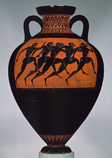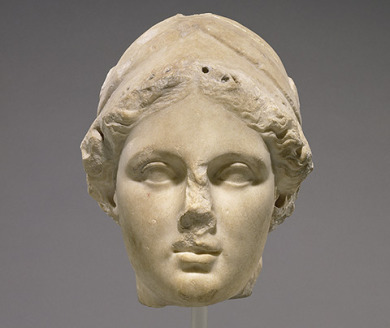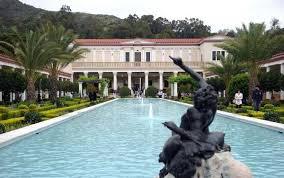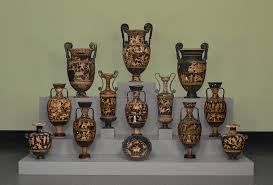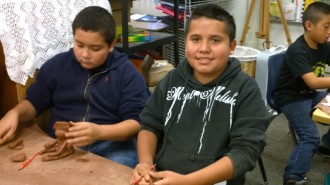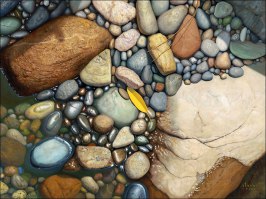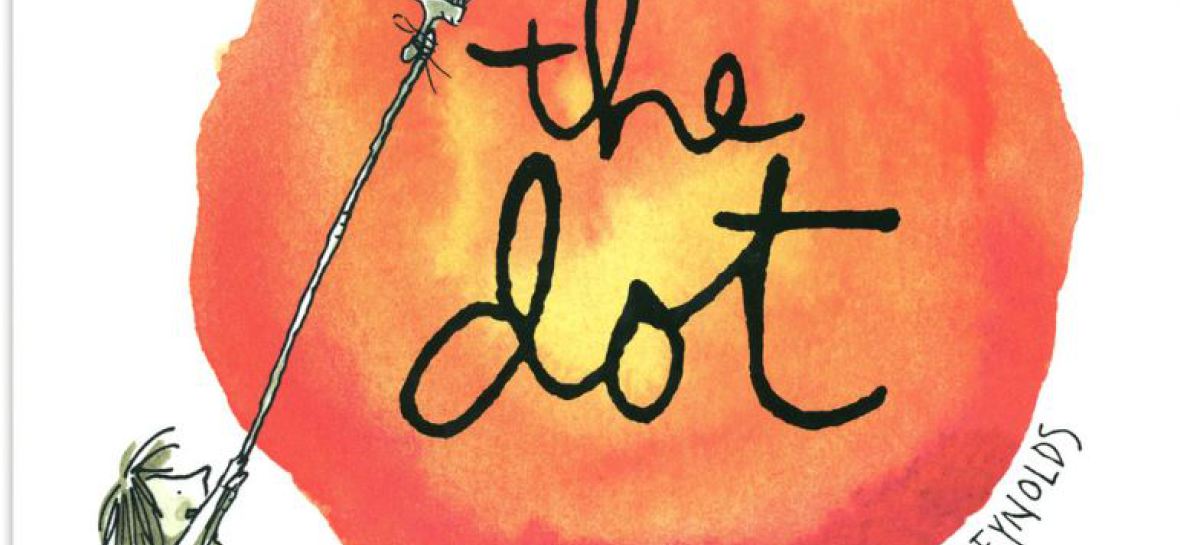

This Visual Arts integrated lesson combines narrative writing, mythology Greek culture and history
Ode on a Grecian Urn
In Ancient Greece, Athens was a major center for the production of vases that were decorated with mythological narratives, beasts and scenes from daily life. Black vases with red figures first appeared around 530 B.C. The Greeks created their pots from local terra-cotta clay. To make their pots black, they used water and a clay mixture, called slip, to paint over their pot. The only areas left unpainted were those that the artists wanted to decorate with red figures. The vase was then fired in a kiln. After three firings, oxidation turned the exposed areas bright reddish orange.
The vases told stories, narratives that the people knew well. The mythological heroes acted out their feats. The vases usually had beautiful geometric patterns at the top and at the base. Amphoras stored honey, olive oil, water or wine. Some were made as trophies for athletes or offerings to the dead. Though they were beautiful works of art, they were functional and fairly inexpensive to manufacture and buy.
Discussion Questions
As you view these two videos determine the purpose for the vases.
Quickly sketch out some of the geometric designs
What kind of mood does the vases create?
How are the vases shaped?
How did the artists use the principles of design: balance, contrast, pattern and emphasis?
|
Lesson Overview (Written by Getty Staff) |
|||
|
Students will examine a scene depicting Herakles (known as Hercules to the Romans) and the Hydra on the face of a black-figure hydria. They will then read Greek myths and choose one to depict in the style of the vase painter, known as the Eagle Painter. |
|||
|
Learning Objectives |
|||
|
Students will be able to: |
|||
All handouts and PDF's can be found on the above link to the Getty
|
Materials |
|||
|
• Image of the Water Jar, attributed to the Eagle Painter |
|||
The Getty Villa houses the J. Paul Getty Museum's collection of approximately 44,000 Greek, Roman, and Etruscan antiquities. Over 1,200 works are on view in 23 galleries devoted to the permanent collection, with five additional galleries for changing exhibitions.
With objects dating from 6,500 B.C. to A.D. 400, the collection contains monumental sculptures as well as artifacts of everyday life.
Visit the Getty Villa
Ode on a Grecian Urn
BY JOHN KEATS
Artful Teaching
Mrs. Schellenberg & Young Artists
Ralph Waldo Emerson's Poem: Success- to leave the world a bit better, whether by a healthy child, a garden patch or a redeemed social condition; To know even one life breathed easier because of you.
Thank you AT&T
We used the wiring for our artful galimotos

